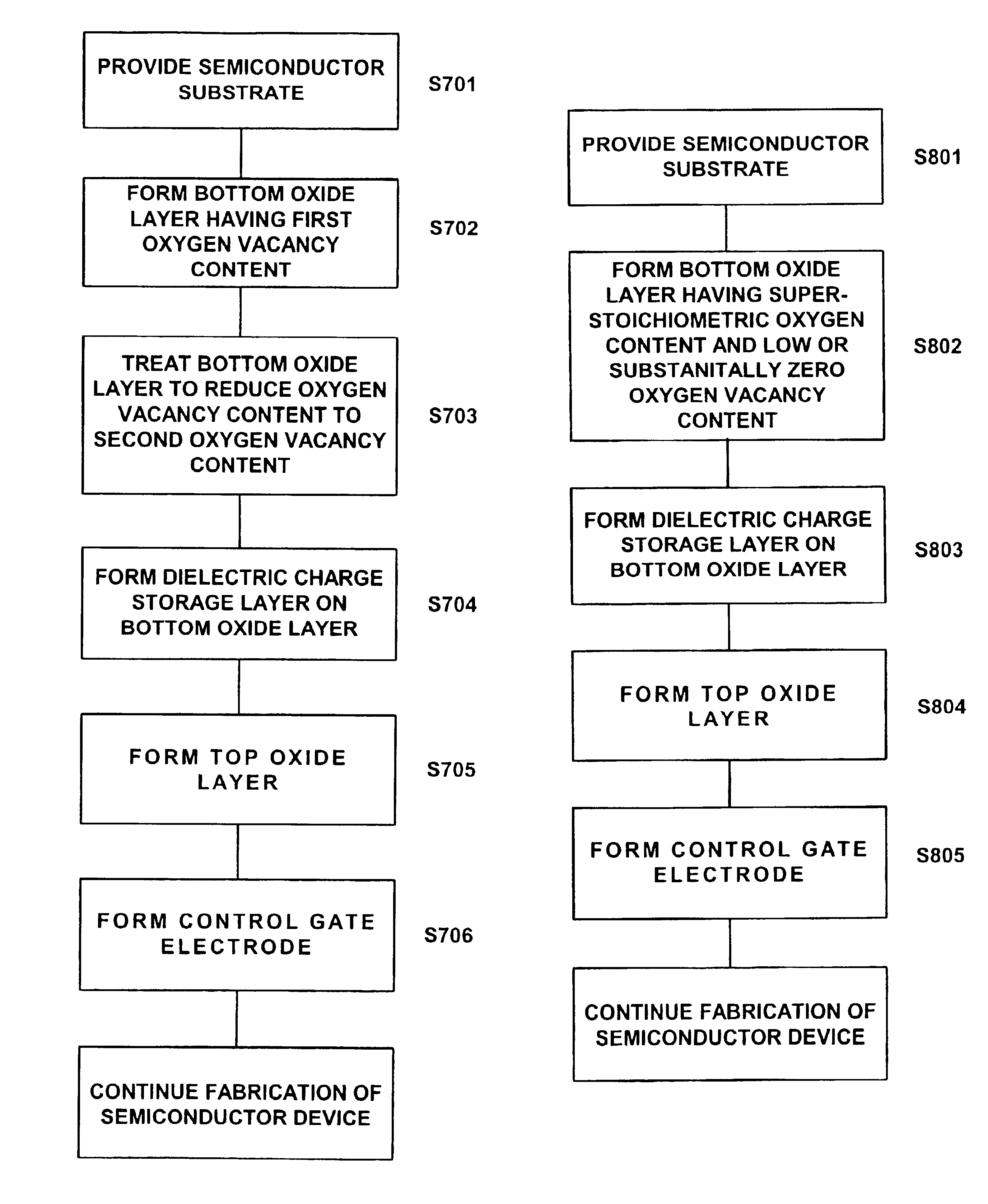ONO fabrication process for reducing oxygen vacancy content in bottom oxide layer in flash memory devices
a technology of flash memory and oxide layer, which is applied in the direction of semiconductor devices, basic electric elements, electrical equipment, etc., can solve the problem of limiting the scaling down of the total physical thickness of the ono layer, and achieve the reduction of the number of e' centers and dangling bonds, and the oxygen content is high.
- Summary
- Abstract
- Description
- Claims
- Application Information
AI Technical Summary
Benefits of technology
Problems solved by technology
Method used
Image
Examples
first embodiment
The present invention broadly includes two embodiments. In the present invention, shown schematically in FIG. 7, a bottom oxide layer 28 is formed by a conventional process to include a first oxygen vacancy content, and is thereafter treated to reduce the oxygen vacancy content from the first oxygen vacancy content to a second oxygen vacancy content. In this embodiment, the bottom oxide layer having the second, reduced oxygen vacancy content exhibits a reduced charge leakage relative to the bottom oxide layer having the first, higher oxygen vacancy content. In one embodiment, the bottom oxide layer having the second, reduced oxygen content has a super-stoichiometric oxygen content.
second embodiment
In the present invention, shown schematically in FIG. 8, a bottom oxide layer 28 is formed by processes which include strongly oxidizing conditions, which provide the bottom oxide layer 28 with a super-stoichiometric oxygen content and thereby an oxygen vacancy content which is reduced relative to that of a bottom oxide layer made by a conventional process. In one embodiment, the bottom oxide layer 28 is formed having a substantially zero oxygen vacancy content. In one embodiment, the super-stoichiometric oxygen content provides an increased oxygen content relative to the oxygen content in a conventional bottom oxide. In one embodiment, the bottom oxide layer having the super-stoichiometric oxygen content exhibits a reduced charge leakage relative to a conventional bottom oxide layer.
The first step of both embodiments is the same. In the first step of the present invention, shown schematically in FIG. 7 as step 701 and in FIG. 8 as step 801, a semiconductor substrate is provided. Th...
PUM
 Login to View More
Login to View More Abstract
Description
Claims
Application Information
 Login to View More
Login to View More - R&D
- Intellectual Property
- Life Sciences
- Materials
- Tech Scout
- Unparalleled Data Quality
- Higher Quality Content
- 60% Fewer Hallucinations
Browse by: Latest US Patents, China's latest patents, Technical Efficacy Thesaurus, Application Domain, Technology Topic, Popular Technical Reports.
© 2025 PatSnap. All rights reserved.Legal|Privacy policy|Modern Slavery Act Transparency Statement|Sitemap|About US| Contact US: help@patsnap.com



